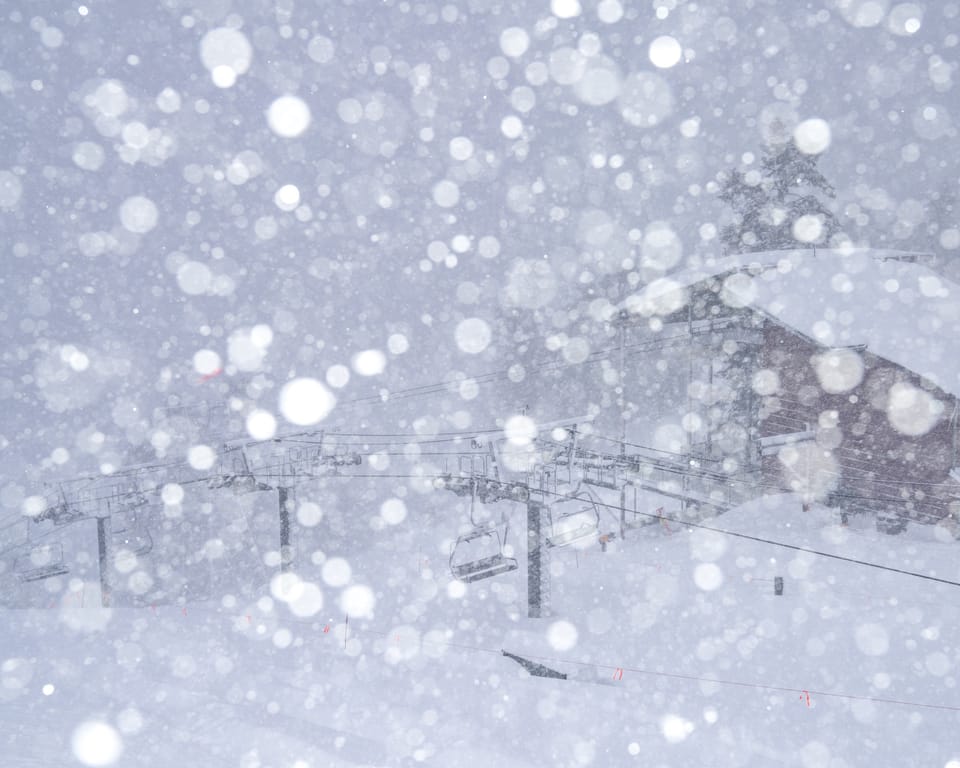POWDER HOUNDS

If you’re caught in a slide, these are the guys to call…
By Alf Alderson
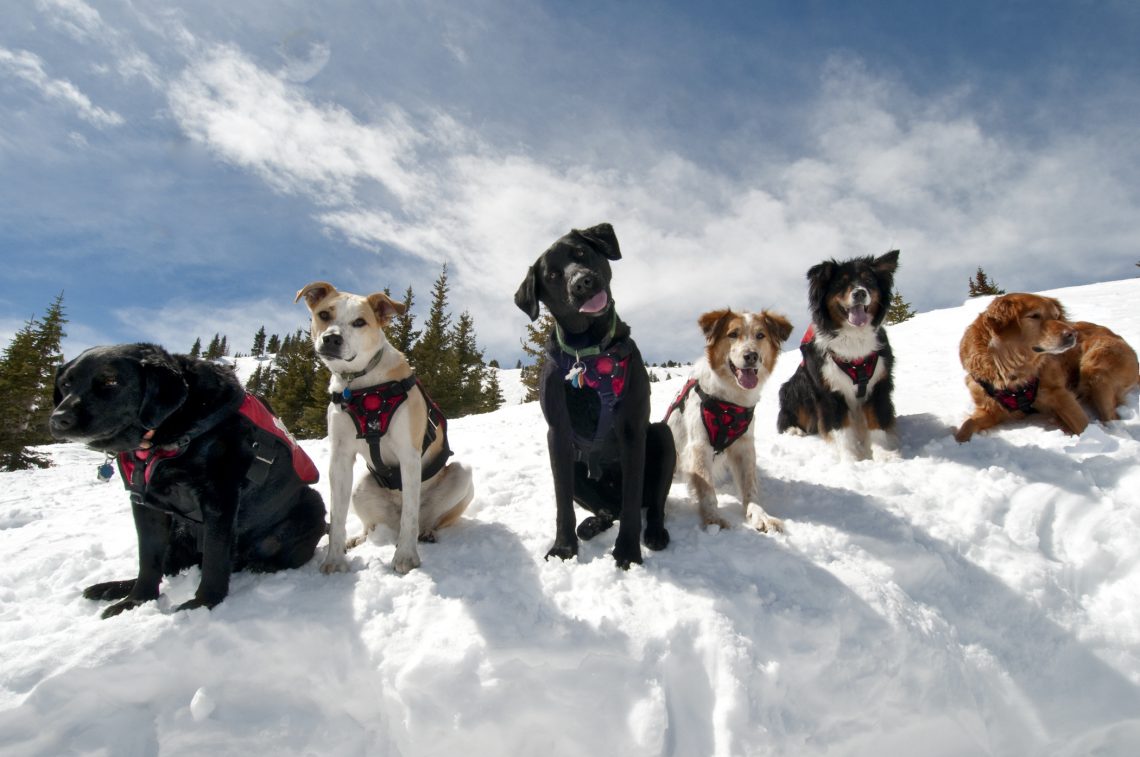
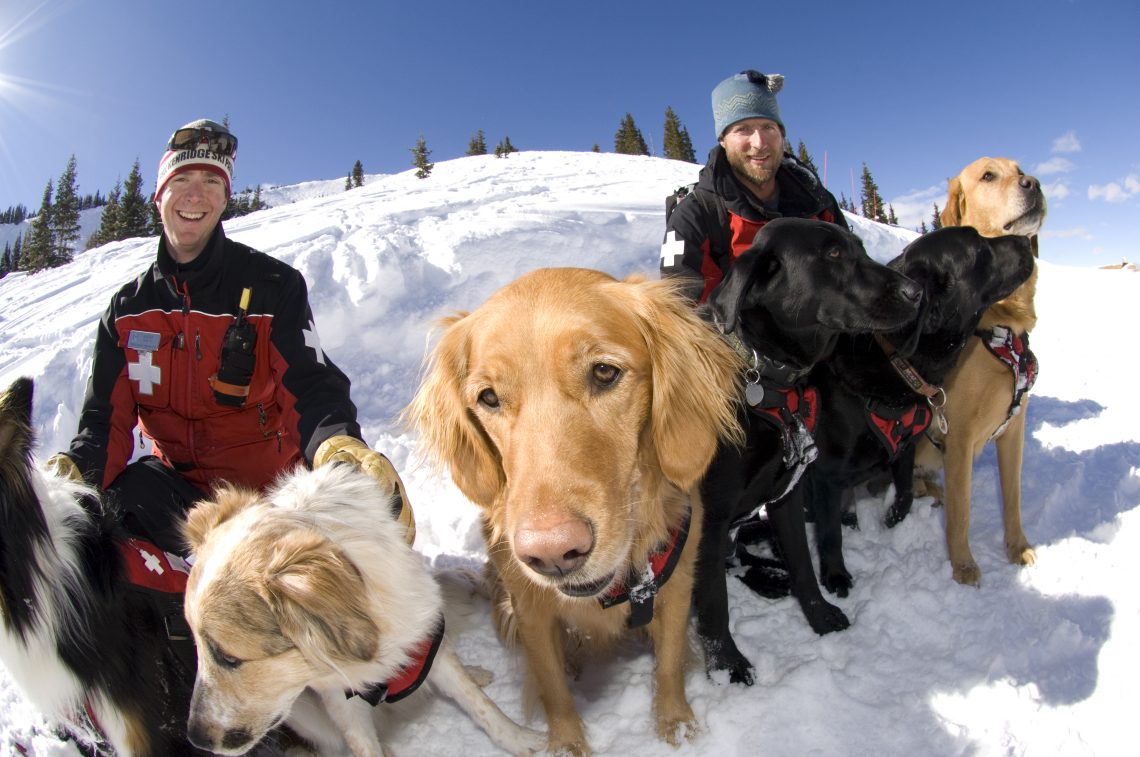
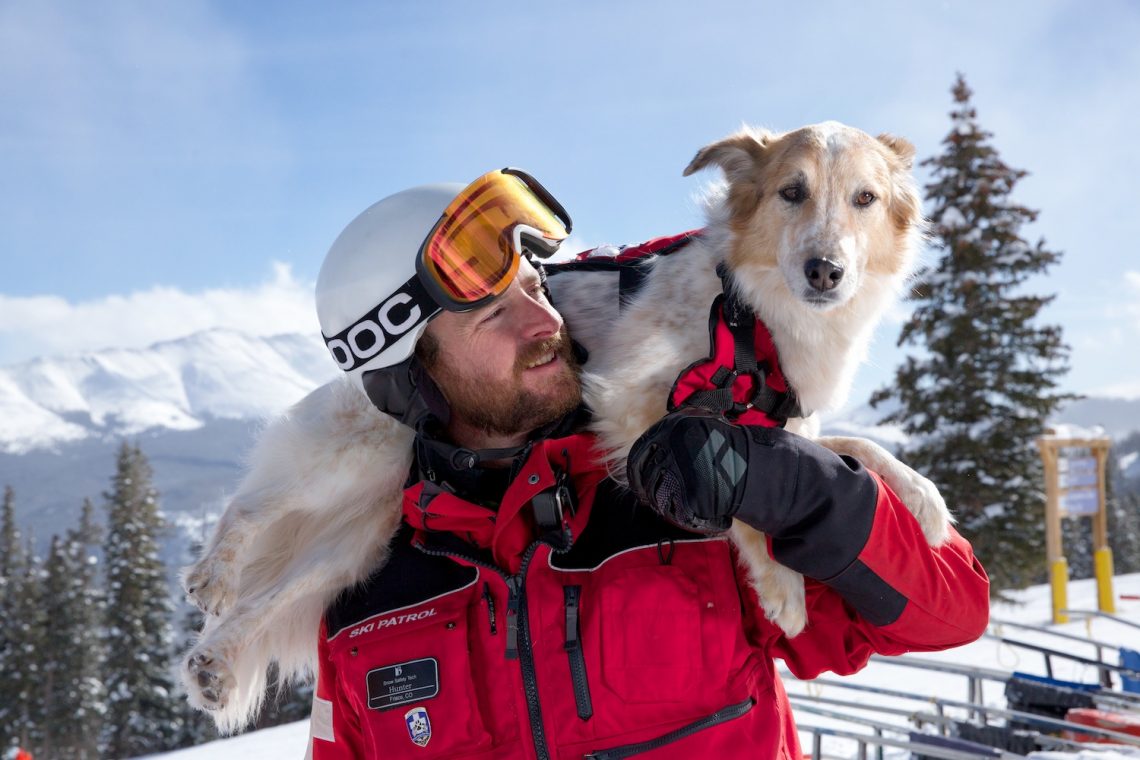
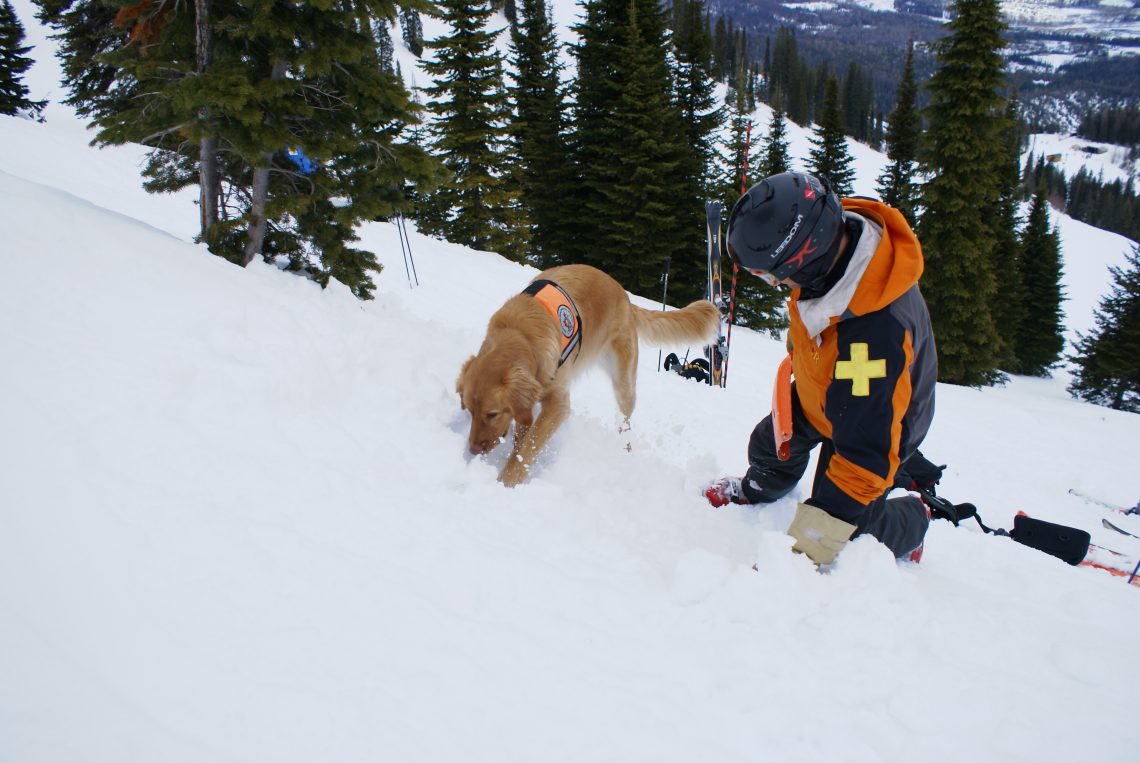
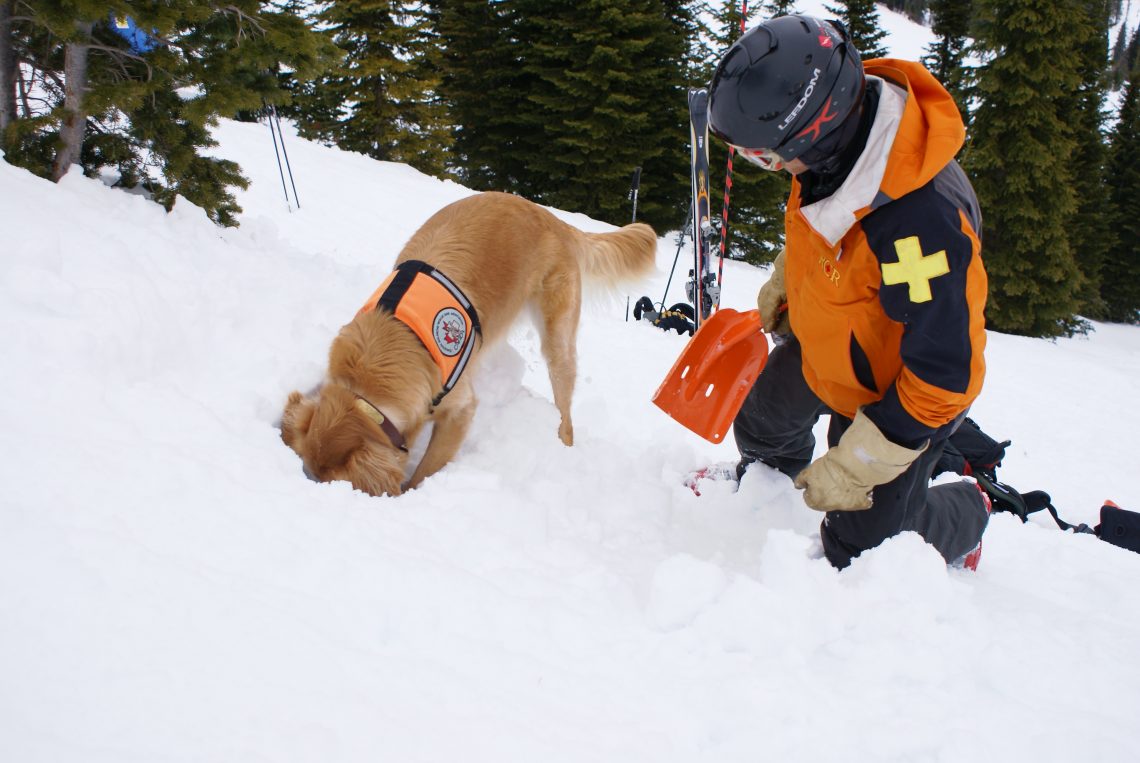
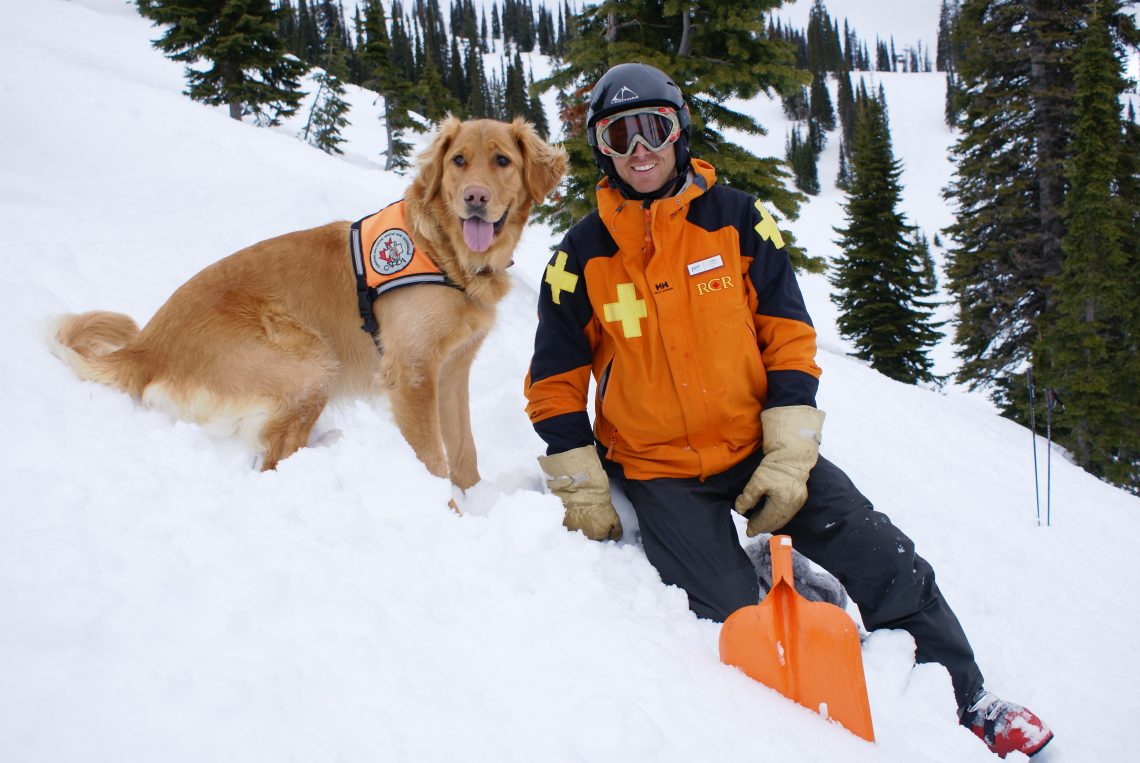
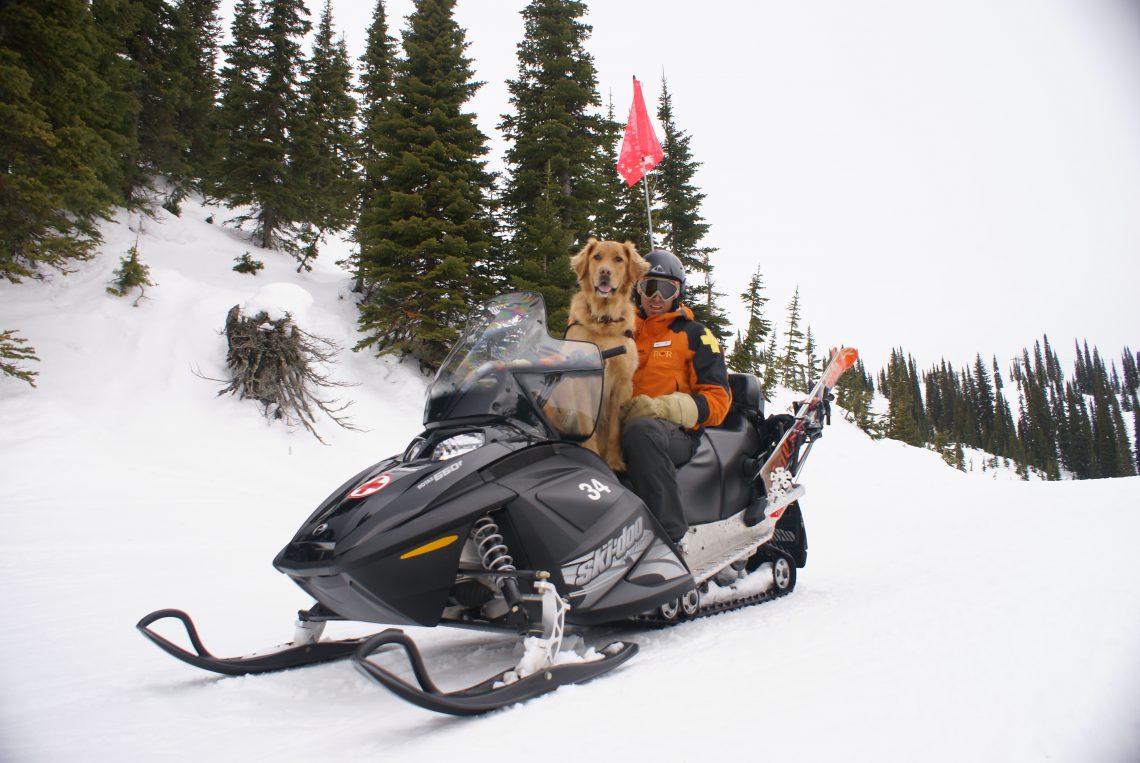
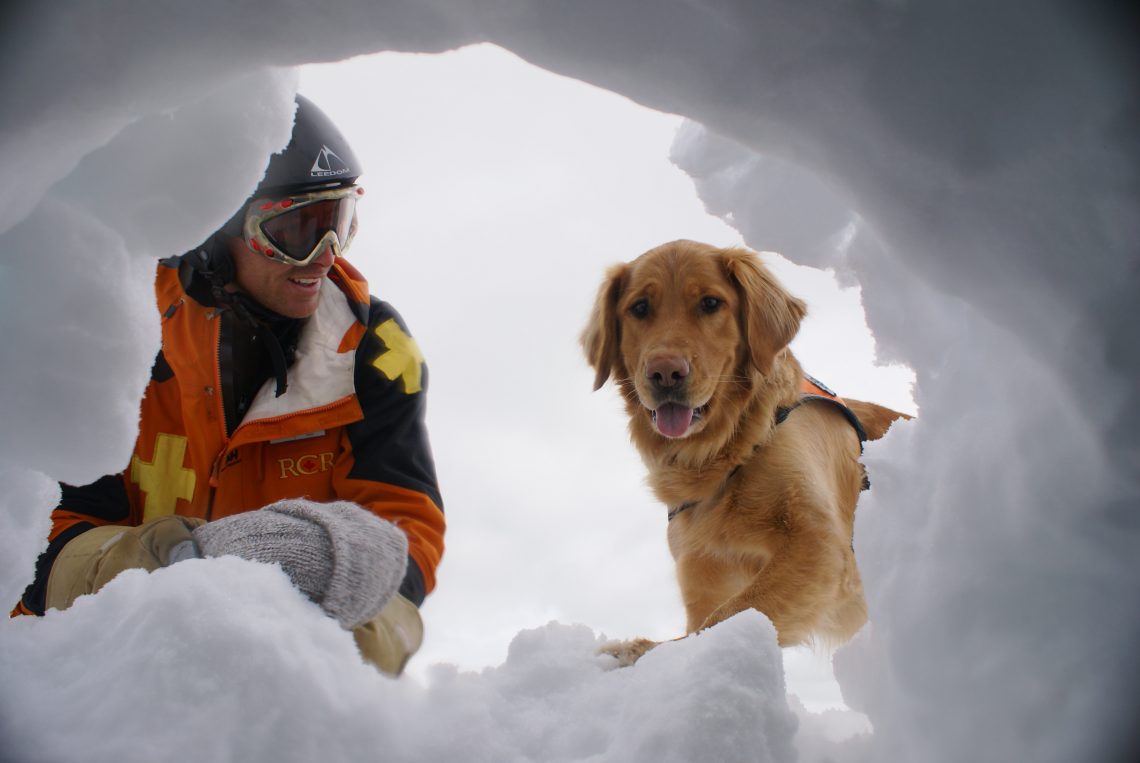
I’m buried beneath a metre of snow, a few chinks of sunlight slicing through gaps to the outside world; but I’m not hurt – in fact, I’m not even worried – because I know an avalanche rescue dog is on the way to find me, and these are the go-to guys in this situation.
‘This situation’ is actually an exercise with the Breckenridge Ski Patrol, so apart from getting a little chilly there really is nothing to get anxious about, for within a minute an enthusiastic canine member of the ski patrol team known as ‘Ayup’ can be heard snuffling and digging above me.
Within seconds she’s burst through the snow and sits there panting and wagging her tail proudly, while her owner and handler Andy Lapkass showers her with praise and pats.
Were this a real life avalanche I could hardly be more fortunate – in a real rescue situation an avalanche dog can search one hectare of rough, snowbound terrain and/or avalanche debris in around 30 minutes – it would take twenty humans with avalanche probes around four hours to cover an equivalent area.
Of course, you have to get the dogs and their handlers to the site of the avalanche first, so they’re trained to ride on chairlifts, snowmobiles and helicopters and usually do all three with way more panache than most humans.
The traditional rescue hound of the mountains, the St. Bernard, is rarely, if ever, used as an avalanche rescue dog these days, since with the best will in the world they’re not the quickest of dogs (in both senses of the word), and who really needs a tot of brandy after being caught in a slide…?
That said there’s no doubt that St. Bernard’s have in the past done a remarkable job of assisting people in trouble in harsh winter conditions. They were bred by the monks of the St. Bernard Hospice on the Grand St. Bernard Pass, located way up on the Swiss-Italian border in the Alps, and one dog with the improbable name of Barry (or Berry) is reported to have saved the lives of up to a hundred people.
However, these dogs were similar in size to a German Shepherd rather than the much bigger modern day St. Bernard; breeding programmes of the last couple of hundred years have resulted in today’s St. Bernards being much larger, as well as having masses of hair which attracts snow and ice, and as such they’re longer suitable for work as rescue dogs.
Instead breeds such as German Shepherds, Border Collies and Golden Retrievers are the dogs of choice for mountain rescue teams. My first encounter with these cool and canny canines was a few years ago in Fernie, BC, where I was involved in a similar rescue exercise to that in Breck. In this case I was dug out by a Golden Retriever cross by the name of Lily, and afterwards I quizzed her owner Kurt Guzman of Fernie Ski Patrol about her work and training.
“The tricky part as a handler is to be able to recognize if your dog is interested in a spot because there’s someone buried beneath it, or because she has just found a surface scent – for instance, where a fellow rescuer may have fallen over and put some human scent on the snow surface”.
Before I was ‘buried’ I’d been given an old sweater that Lily had seen and sniffed before; the scent of this is what she is searching for in the exercise rather than me, and the game of tug of war we have with it after she’s found me is a reward for her efforts.
Lily has learnt to track down the scent of the human clutching on to the sweater since in a real life avalanche she would be searching for similar odours given off by a buried victim (researchers at Stony Brook University in New York have found that people who are scared or anxious – as you would no doubt be if buried by an avalanche – give off strong scent signals in the form of pheromones). She will do a practice rescue like this twice a week throughout the winter.
“The first successful avalanche dog rescue in Canada took place here in Fernie in 2000, when a buried skier was dug out alive thanks largely to the work of the dog” says Kirk.
“I was a member of the ski patrol team at the time. I got Lily a couple of years later with the intention of working her as an avy dog, and at two months old she began her training”.
Kirk went on to explain that as a puppy all the training is based on praise – obedience training doesn’t begin until the dog is a year old. When Lily was eight- months-old she and Kirk attended a weekend assessment course with the Canadian Avalanche Rescue Dog Association (CARDA) where trainers from the Royal Canadian Mounted Police assess dogs for their suitability. Lily passed, of course.
There then followed more training and eventually a week-long winter course involving everything from recognising human scents to learning to ride on ski lifts and snowmobiles and in helicopters.
Lily and Kirk successfully completed this to become a ‘team in training’ for a full year, after which came another week-long winter course, which they passed to become a fully certified avalanche rescue dog team and validated members of CARDA.
The speed with which an ‘avy dog’ may locate an avalanche victim is absolutely vital in a rescue, since around 90 per cent of avalanche victims will survive if recovered in the first 15 minutes after burial provided they haven’t suffered fatal trauma. This drops to just 30 per cent after half an hour and only 10 per cent after two hours.
The dog searches for ‘pools’ of human scent which are given off by buried victims – if still conscious the scent will be especially strong as the victim is highly likely to be panicking and may even be sweating despite the cold. The odour rises up through the snow pack before being carried away on the breeze, and when a dog finds a potential scent they’ll bury their snout and head into the snow to try to locate it more accurately.
If the scent intensifies the dog will start to dig and human rescuers will come along and assist with shovels; if the scent becomes weaker the dog will work outwards from the area to try to locate a stronger scent. It’s not dissimilar to using an avalanche transceiver, just a lot quicker.
Just like their handlers the dogs have their own specialised kit. They’ll usually be wearing a vest which (in North America at least) features a white cross on a red background, although – and it’s surprising how many people ask about this – they rarely if ever have anything on their feet to protect against the cold.
Snow can, however, become clogged up between a dog’s paws when it is running through snow or digging, which may be uncomfortable or even result in chafing and sores, but this can be prevented by rubbing Vaseline or suchlike between the paws.
During the winter a resort’s rescue dogs travel to work with their owners bright and early every morning through the ski season, hitting the slopes well before the first skiers of the day arrive.
When I was in Breckenridge I spent the day shadowing Hunter Mortensen, the head of Breck’s Ski Patrol. We started before sun up, with a high speed snowmobile ride from the base up to Ski Patrol HQ on Peak 8. I’m on the back, Hunter is driving and sitting in front of him, cool as, is Tali, his avy dog.
I’m privy to the early morning meeting of the entire ski patrol team, listening and watching as Hunter assigns jobs for the day, and much as I admire ski patrollers and the work they do it’s the avy dogs Tali and Ayup who grab my attention.
This is only natural as I’m the proud owner of a Border Collie myself, and as Hunter later points out “Our dogs are great ambassadors for the ski patrol team. People love to see them on the mountain and regularly stop and ask about the work they do, which gives us a great link with the public”.
A close relationship between handler and dog is essential, it goes without saying. On the occasions when I met Hunter, Andy and Kirk the bond between man and dog was palpable, with each handler and dog acting as a single unit.
As anyone who has owned a dog will know a natural bond does develop with your pet, but these dogs seem to take it one step further. They’re attuned to every move of their handler, and respond instantly to any command, whilst the handler also seems to be constantly aware of what his dog is doing and where he or she is.
The dogs are usually part of their handler’s household, which effectively means that throughout the ski season handler and dog are together for 24-hours a day. It’s no wonder a remarkable bond develops between the two.
So, imagine it if you will. You have a job you love, often going to work by snowmobile or helicopter, you spend the day scooting around the mountain with your best mate, and you have the pleasure and satisfaction of occasionally saving a skier or boarder in peril.
Who wouldn’t envy the life of an avalanche dog?
USEFUL LINKS
Breckenridge Ski Patrol www.breckenridgeskipatrol.com
Breckenridge Resort www.breckenridge.com
Fernie Resort and Ski Patrol www.skifernie.com
Canadian Avalanche Dog Rescue Association www.carda.bc.ca




